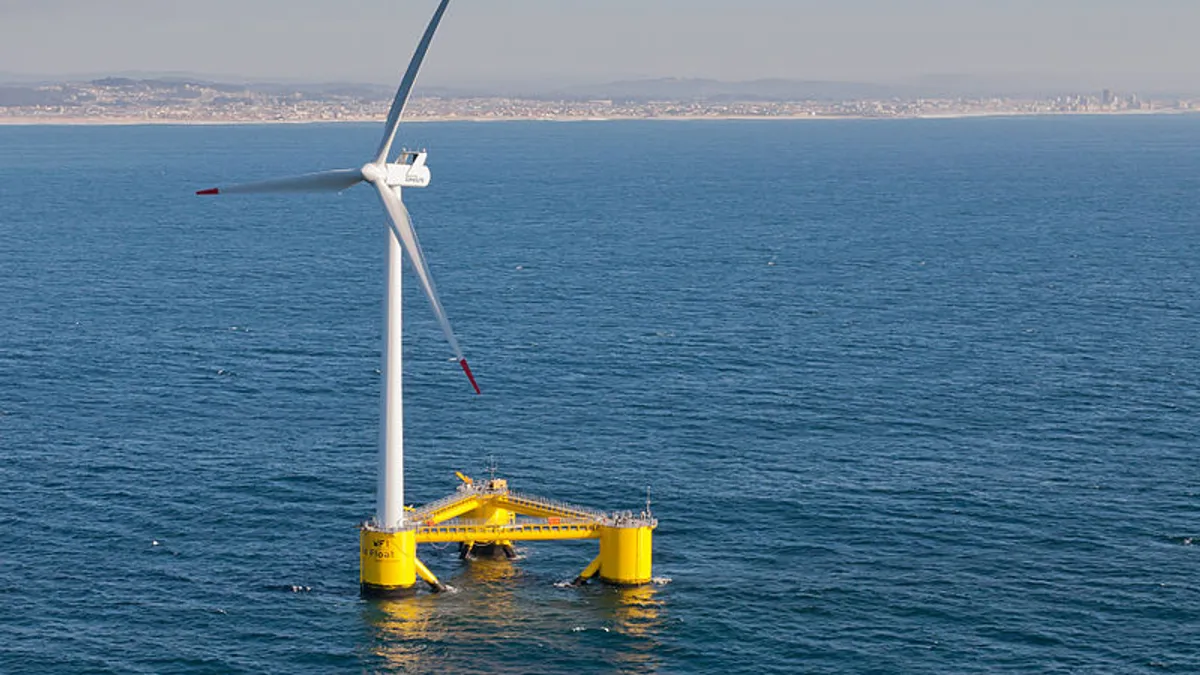Dive Brief:
- Offshore wind developers in California and Hawaii, stymied by the deep waters that prevent the use of standard offshore wind turbines fixed to the ocean floor, have proposed projects with cutting edge floating wind turbine foundations.
- Trident Winds has proposed a 100 turbine, 1,000 MW floating foundation project off California’s central coast. For off Oahu, Alpha Wind Energy Hawaii has proposed two 50-turbine, 400 MW projects and Progression Hawaii Offshore Wind has proposed a $1.8 billion, 400 MW project with up to 50 turbines.
- There are only 15.33 MW of installed floating wind capacity in the world, less than 1% of the 11.6 GW of global offshore wind capacity in operation, according to Bloomberg New Energy Finance. Statoil’s five turbine, 30 MW project, the world’s biggest floating wind installation, will go online in Scotland in 2017.
Dive Insight:
Bloomberg projects U.S. offshore wind capacity to grow to 178 MW by 2020. Any of the three offshore wind projects planned for Hawaii or California would dwarf that number, though its unclear whether they would begin producing energy by that time.
Bloomberg reports an estimated 1 TW of potential generation capacity off U.S. Pacific coasts, 13 times the current U.S. onshore wind installed capacity. The question is whether it can be harvested cost-competitively.
Deepwater Wind's 30 MW, five-turbine fixed foundation Block Island Wind Farm, expected to be operational this summer off Rhode Island's coast, will be the first U.S. offshore wind project. Its 20-year power purchase agreement with National Grid sets the electricity price at $0.244/kWh.
A recent University of Delaware study concluded large scale development could reduce a previous estimate of offshore wind’s levelized cost of energy of $0.24/kWh to $0.108/kWh by 2030.
Floating foundations cost eight times more than fixed foundations, but proponents argue they can be more cost effective for two reasons. First, installation is cheaper because instead of seabed construction they can be built dockside and towed into place. Second, they can be reused when the turbines they support are swapped out for new updated technology.













